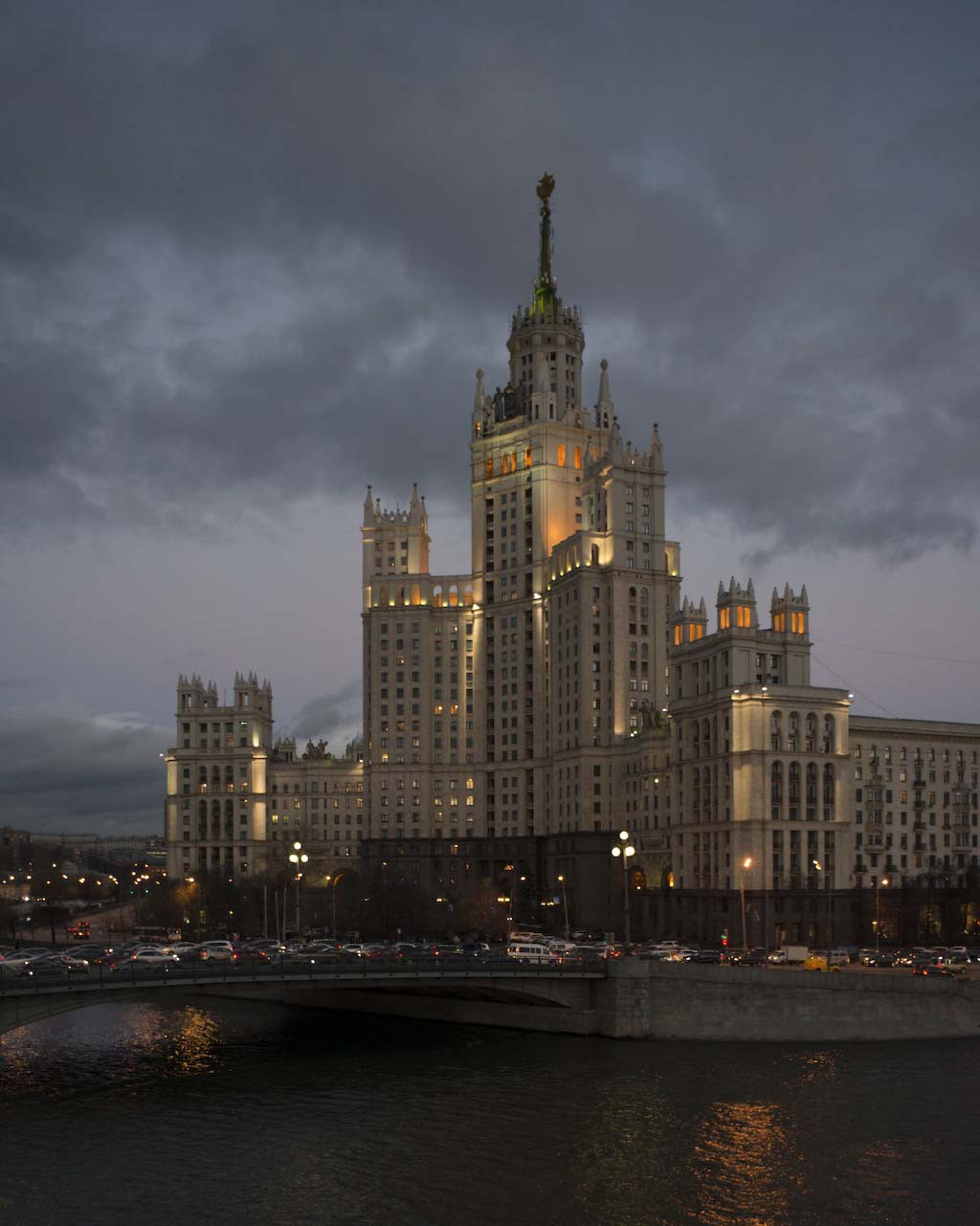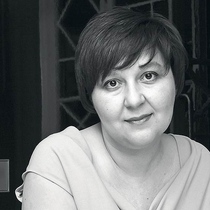Как Москва и Петербург должны предстать перед глазами бразильского туриста, интересующегося архитектурой, дизайном, красивыми интерьерами, современным искусством, а также водкой, селедкой и балалайкой - поскольку это, вероятнее всего, его первый и последний визит в Россию. Так было сформулировано задание бразильского журнала Casa Vogue, где в феврале 2014 года вышла эта статья (на португальском языке).
Спящая красавица и город, который никогда не спит
From outside the whole horizonless Russia is seen just as two cities – bright, sparkling Moscow and severe, aristocratic Saint Petersburg. There is some truth in what they say and there is some simplification at the same time. But what is absolutely indubitable that to understand what Russia is now a person needs to see them both – just to realize that they both are symbols and hearts of Russia and in the same time they are different “like stone and water, ice and flame” (Pushkin, Eugene Onegin, ch.2), like the Moon and its other side. Moscow with its circular and chaotic city plan is like a whirlpool and even for Russians themselves it’s too bourgeois, too more about money, showing-off, fanfare and glamour; and Saint-Petersburg planned with regular grid is a thing in itself, calm, easy going and well-ordered, living without haste and time pressure, it’s the cultural capital, the city of great architecture, ballet, music, and a kind of sleeping beauty.
And it’s been like this for centuries already. Moscow was always the same - an ancient capital, the seat of all Russian tsars till the end of 17th century and the tradeful, merchant city in the very heart of the country. Grand and formal, however much more cold and wet and windy, Saint-Petersburg is the brilliant of the Nord, the Northern Venice, as it’s often called. It is almost 800 km to the north, built on the banks of the Baltic Sea under the will and power of Peter the Great to become the splendid and most up-to-date European city of its time. The first is now one of the capitals of the world, an international and contemporary and controversial as any of the megapolises of our time. It’s energetic, busy, never-sleeping, sparkling and boiling, combining everything in one – with old red bricks Kremlin walls and the extremely contemporary City where Sir Norman Foster and SOM architectural studio are building hi-tech towers, with the traffic when the whole city stays for hours without any move and nicest, quiet, old world pedestrians-friendly side streets, gardens, ponds, in the very middle of the city. And the later kept its glory and aristocratic pride through all the Soviet era when it was reduced to the level of one of those regular provincial towns and is carefully keeping its past: the construction of the oil monopoly headquarters tower on the banks of the Neva River that should have broken the famous city skyline was blocked recently after an uproar from the civil society. Even the horizon is a sighseeing there.
Of course in Moscow there is all that old time beauty that you can find in any tourist guide: Red Square, Kremlin, Bolshoi Theatre, as well as the Metropol Hotel or the Petroff Palace Hotel with their timeless and so Russian look and spirit. Anyone can also find this Russian past in the interiors of two Moscow must-to-see slots – Café Pushkin and Eliseevsky Gastronom (or grocery store), both in style of the Russian golden times (by the way, Café Pushkin is finely antiquated by its owner Andrew Dellos in the style of Russian aristocratic houses of Pushkin time brought to the 1990’s and Eliseevsky Gastronom is a real treasure from 1901 succeeded to survive over the Soviet years). Soviet heritage is also absolutely beautiful. The city is blessed with an incredible neoclassic Stalin era architecture including the so-called ‘Seven sisters’ dominating all over the city – seven skyscrapers in one of which the Moscow State University is locates, with a view point nearby. Don’t be scared to go to the metro – dozens of stations look like underground palaces decorated with marble, sculptures, mosaic, stained glass, and semiprecious stones. There is a glimpse of constructivist and modernist architecture from the beginning of the 20th cent. such as an outstanding private house of architect Konstantin Melnikov in the side street near Stary Arbat pedestrian and tourists street (unfortunately there is still no museum there and the building is slowly falling into decay) and the famous and only one Le Corbusier’s building in Russia – Tsentrosoyus building (unfortunately it’s also closed to the public as the Ministry of Statistics is happily located on its eight floors). Some more of Russian vanguard can be found in Tretiakov Art Gallery’s 20th cent. Department in the Central House of Artists at Krymsky Val street. Rodchenko and Malevich, Kandinsky and Marc Shagal, Deineka and Petrov-Vodkin, Goncharova and Larionov are collected in that concrete building looking like huge park pavilion from 1960s on the bank of Moscow river. And there are also up-to-date places rising on the Moscow map such as Shigeru Ban’s building of Contemporary Art Center Garage or Strelka café and Kamchatka bar or Sleep Box capsule hotel recently opened in the city center. Watching and experiencing this diversity of tsarist, young Soviet, late Soviet and contemporary Moscow is the most exiting thing you should do there.
Coming to Saint Petersburg after Moscow will make a big contrast. After becoming a little bit deaf in crazy and loud Moscow you will be able to listen to your heart. Instead of the capital’s chaos and mess of its numerous roads and streets – there is an order and severe geometry of the city plan, instead of ‘concrete jungle’ of high buildings, old and new – there is a wide horizon and open perspectives over the prospects and embankments, and instead of rich and excessive décor of historic buildings and interiors – Nordic simplicity and empire power. A lot of traditional style hotels like newly opened splendid Four Seasons or already working for a few years The Hermitage Hotel are ready to take care of a lace curtain tourist as well as plenty of bed & breakfasts in old tenement buildings where the upper class lived before the revolution. And anywhere you go you will find the disappearing or already almost gone traces of that Russian past: in the parks and palaces, museums and the railway stations, shops and restaurants. The most beautiful , if not those original prerevolution interiors, then those trying to interpret the present from the past point of view and to provide the newly decorated places with the atmosphere and look of the past, everything it its own way – like delicate ‘The Restaurant’ restaurant with its modest white and grey color scheme and simple and refined in the same time old Russian food. Or like at Vodka Bar Number 1 where the interior style is more simple and suburban as the vodka itself is. The modernity is performed in a very few places: a few contemporary art and design galleries and multifunctional spaces, newly opened W Hotel designed by Antonio Citterio, new Percorso dining in Four Seasons and BMI bar with the young and talented chef Ivan Berezutsky cooking the Russian cuisine nouvelle.
They say that people are generally divided to those who like cats and who like dogs. It’s true for Russians but they are also divided to those who prefer Moscow to Saint Petersburg or those who prefer StPete to Moscow. This was described best of all by young Russian poet and actress Vera Polozkova who said once: “Petersburg is like dad and Moscow is like your mom. They are divorced, and for sure you live with mother, powerful, loud-spoken, flat-bellied aspirant for honours and damned wretch indeed; and your daddy whom you visit once a year is the sweetest, the modest, the warmest man who entertains you with ring doughnut andhot black tea and you immediately feel guilty that come to see him so rare. But then you go back and again till next year”. A fair description.













